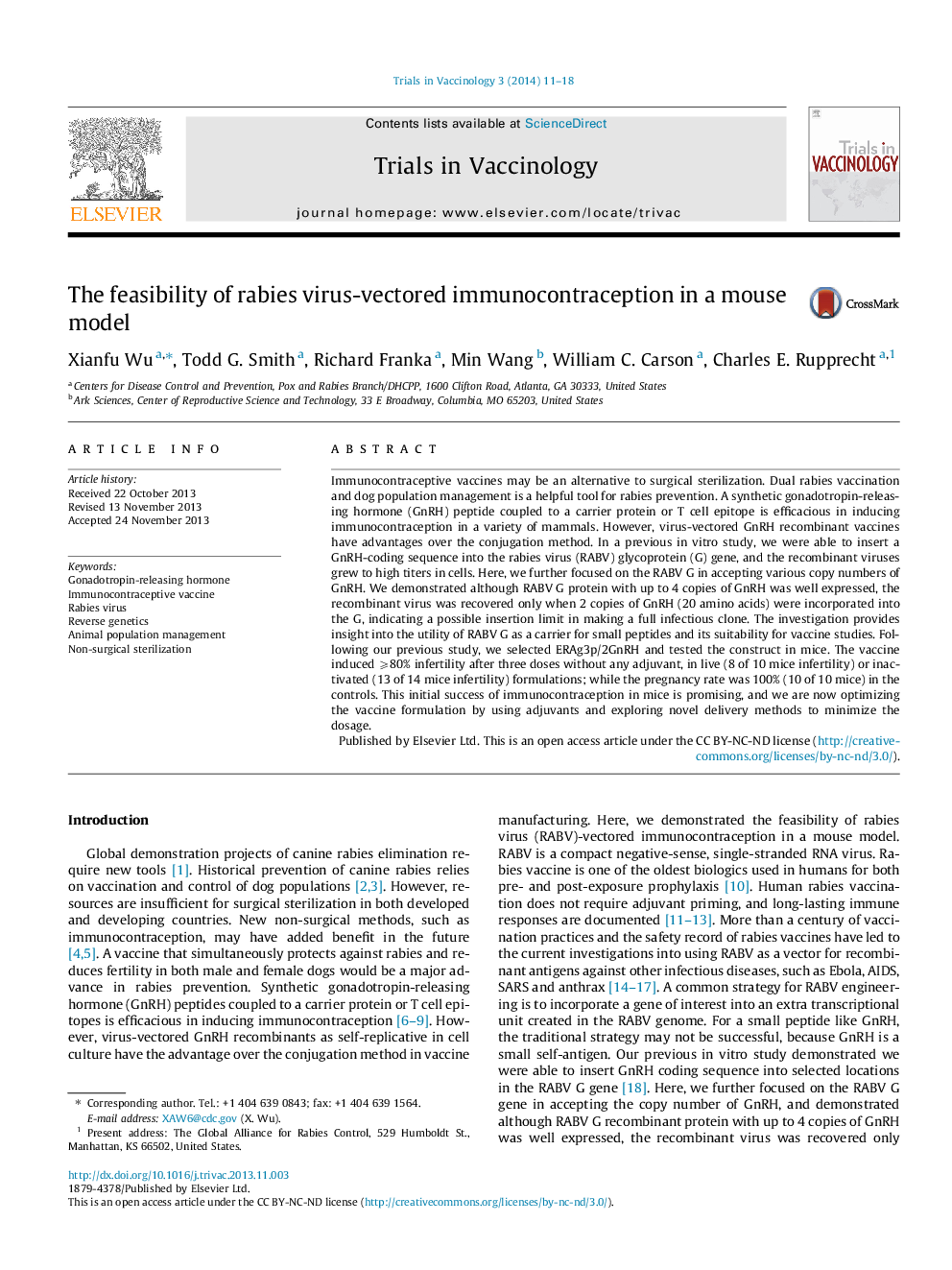| Article ID | Journal | Published Year | Pages | File Type |
|---|---|---|---|---|
| 2474400 | Trials in Vaccinology | 2014 | 8 Pages |
•We constructed a rabies virus-GnRH immunocontraceptive vaccine.•We investigated the capacity of rabies virus G in accepting GnRH copies.•The ERAg3p/2GnRH was successful in immunocontraception in a mouse model.•Our finding serves as the basis for future studies in other target animals.
Immunocontraceptive vaccines may be an alternative to surgical sterilization. Dual rabies vaccination and dog population management is a helpful tool for rabies prevention. A synthetic gonadotropin-releasing hormone (GnRH) peptide coupled to a carrier protein or T cell epitope is efficacious in inducing immunocontraception in a variety of mammals. However, virus-vectored GnRH recombinant vaccines have advantages over the conjugation method. In a previous in vitro study, we were able to insert a GnRH-coding sequence into the rabies virus (RABV) glycoprotein (G) gene, and the recombinant viruses grew to high titers in cells. Here, we further focused on the RABV G in accepting various copy numbers of GnRH. We demonstrated although RABV G protein with up to 4 copies of GnRH was well expressed, the recombinant virus was recovered only when 2 copies of GnRH (20 amino acids) were incorporated into the G, indicating a possible insertion limit in making a full infectious clone. The investigation provides insight into the utility of RABV G as a carrier for small peptides and its suitability for vaccine studies. Following our previous study, we selected ERAg3p/2GnRH and tested the construct in mice. The vaccine induced ⩾80% infertility after three doses without any adjuvant, in live (8 of 10 mice infertility) or inactivated (13 of 14 mice infertility) formulations; while the pregnancy rate was 100% (10 of 10 mice) in the controls. This initial success of immunocontraception in mice is promising, and we are now optimizing the vaccine formulation by using adjuvants and exploring novel delivery methods to minimize the dosage.
